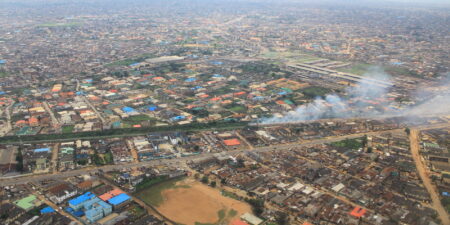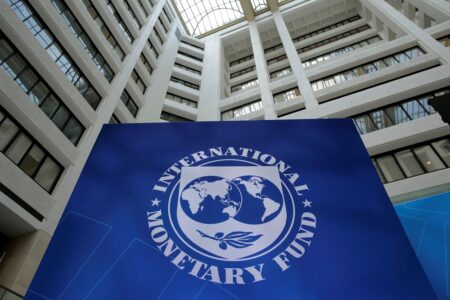- In the six months to June 2023, the United States remained the leading source market for Kenya’s tourism sector growth.
- Americans are familiar with Kenya’s Mount Kenya region and the Maasai Mara National Reserve, which offers Safari experiences.
- Uganda was the second leading source of travelers with 89,968 (10.6%), Tanzania came in third with 69,777 (8.2%), the UK fourth with 65,563 (7.7%) while India closed the top five list.
International tourist arrivals grew 32 per cent in the half-year to June, closing at 847,810 as the Kenya’s tourism sector growth continued post-Covid-19. This was up from 642,861 arrivals recorded in the same period last year, official data by the Ministry of Tourism indicates.
The performance represents a 92 per cent recovery compared to the 2019 in same period. The increased numbers came with higher earnings for the country and the sector.
“The tourism sector in Kenya experienced a remarkable upswing in international arrivals leading to a positive effect on the country’s tourism receipts,” Kenya Tourism Board said.
During the half-year period, the total tourism receipts surged to $1.1 billion (Ksh152.6 billion), reflecting an impressive growth rate of 31 per cent compared to the previous year’s earnings of $804.7 million (Ksh.116.2 billion).
Top source markets
In the first half of 2023, the US remained the leading source market for Kenya’s tourism sector growth, closing at 118,480 North American tourists who visited Kenya. Americans are familiar with Kenya’s Mount Kenya region and the Maasai Mara National Reserve, which offers Safari experiences. American visitors during the six months accounted for 14 per cent of the total arrivals.
Most European tourists from the UK, Germany, and Italy prefer the coastal region (Mombasa, Diani, Malindi, Kilifi, and Lamu), competing with Dar es Salaam and Zanzibar as leading beach holiday destinations in East Africa.
Uganda was the second leading source with 89,968 (10.6 per cent), Tanzania came in third with 69,777 (8.2 per cent), the UK fourth with 65,563 (7.7 per cent) while India closed the top five list with 42,805 arrival (5 per cent). (https://www.littlegermanytucson.com/)
Some key markets have surpassed 2019 half–year performance, KTB said, notably the US by seven per cent in 2019 from 110,743 to 118,480; Italy by 15.6 per cent from 22,017 to 25,451; Germany by four per cent from 32,142 to 33,418 and Rwanda by 34.5 per cent from 18,845 to 25,422.
Ethiopia also surpassed last year’s arrivals by 66.1 per cent from 11,018 to 18,296; the Netherlands by 6.9 per cent from 19,123 to 20,442; Nigeria by 7.3 per cent from 15,307 to 16,424; Ghana by 28.1 per cent from 5,137 to 6,583 and Russia by 40.8 per cent from 2,514 to 3,539.
Also Read: Kenya eyes India in tourism recovery, growth plan
Purpose of entry
The government statistics indicated that the period holiday was the primary purpose of entry closing at 338,509 (39.9 per cent). Business & MICE (Meetings, Incentives, Conferences, and Exhibitions) was the second primary purpose if visiting Kenya by international tourists.
During the period under review, 226,908 (26.8 per cent) were in the country for meetings, conferences, and business deals. Those visiting family and friends totaled 213,417 arrivals, the third primary purpose of touring Kenya. On Transit passengers were 44,620 (5.3 per cent), while other purposes, among them education, medical, religion, and sports totaled 24,356.
The country’s biggest airport and regional aviation hub, the Jomo Kenyatta International Airport in Nairobi, was the main entry point recording 589,553 visitors. Mombasa’s Moi International Airport was the second entry point with 65,468 arrivals, while other airports recorded a combined appearance of 3, 671 mainly small planes and private jets. Moreover, entries through border points totaled 189,118, with Ugandan and Tanzanians crossing over mainly for business.
Also Read: Trans-African infrastructure: a vital tool to ignite tourism and trade
Domestic bed nights
Domestic tourism also had positive growth, with bed nights recording a 16 per cent increase in 2023 (January – June), closing at 2.3 million, compared to 2.02 million same period last year.
“The best performing months were April and June, which can be attributed to the Easter holidays and business travel, respectively,” KTB said in its report.
Domestic tourism has remained vital in cushioning the tourism and hospitality industry in the country since the onset of the Covid-19 pandemic in 2020. With international numbers picking up, local industry players are also hoping to sustain the domestic market despite reduced incomes by households in the wake of high inflation.
“Disposable income has reduced with many households seeking to meet basic needs first before planning for holidays. This is likely to affect how the domestic market spends,” said Sam Ikwaye, the Kenya Association of Hotel Keepers and Caterers executive, Coast region.
Global performance and outlook
International tourism recovered 63 per cent of pre-pandemic levels in 2022, with Europe and the Middle East in the lead, according to the UNWTO.
Significant pent-up demand and the lifting or relaxation of travel restrictions in many countries backed up the stronger-than-expected results.
Approximately 900 million tourists traveled internationally in 2022, double those in 2021 though still 37 per cent fewer than in 2019.
Looking ahead, international tourism will consolidate its recovery in 2023, backed by pent-up demand, particularly from Asia and the Pacific, as destinations and markets open up.
The UNWTO Panel of Experts Survey indicates that 72 per cent of respondents expect better performance in 2023.
However, most experts (65 per cent) also believe international tourism will not return to 2019 levels until 2024 or later.
Based on UNWTO’s scenarios for 2023, international tourist arrivals could reach 80 per cent to 95 per cent of pre-pandemic levels this year, with Europe and the Middle East expected to reach those levels.
However, important risks remain ahead, primarily economic and geopolitical.
“Tourists are expected to increasingly seek value for money and travel close to home in response to the challenging economic environment,” UNWTO said.
The complete recovery, however remains subject to certain risks like a potential economic slowdown amid high inflation and rapid interest hikes, which have increased financial costs and debt levels.
Higher food and energy prices result in lower purchasing power and weaker consumer confidence, which could weigh on travel demand in 2023, especially in spending. The Russian offensive in Ukraine and geopolitical tensions in North-East Asia could also disrupt the normal travel, UNWTO noted further.











